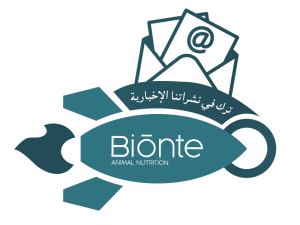Introduction
Mycotoxins can induce toxic effects in different ways on swine, such as metabolic, nutritional and endocrine alterations. The most described injuries consist of liver damage, gastrointestinal barrier alterations and predisposition to secondary effects, such as oxidative stress (Popescu et al., 2022).
Among the mycotoxins most frequently found in raw materials intended for animal nutrition are aflatoxins and fumonisins.
Susceptibility to aflatoxin mainly depends on the age. In fact, piglets are more sensitive than adult swine. Moreover, ingested mycotoxins by lactating sows can be transferred to milk, and thereby, transferred to the piglets. This results in a reduction of food intake, average daily gain and feed efficiency (Popescu et al., 2022).
On the other hand, the exposition to fumonisins in swine is characterized by lesions in the pulmonary, hepatic, cardiovascular and immunity levels, as well as alterations in the metabolism of sphingolipids and the effects on the growth ratio and the carcass composition (Haschek et al., 2001).
In sows, mycotoxins can alter the reproductive performance since they induce changes in milk production and the physiologic mammary gland status.
Once the mammary gland has been compromised, litter feeding may be affected, leading to significant economic losses. To guarantee high productivity in sows, it is necessary to promptly detect a disease in order to treat it as soon as possible and implement a strategy according to the disease.
At BIŌNTE, we are experts in mycotoxin control. We have developed a wide range of products designed to meet the daily challenges that animals face.
Evaluation of the efficiency of BIŌNTE® QUIMITŌX® PLUS mitigating mycotoxins effect on pregnant sows
BIŌNTE® QUIMITŌX® PLUS is characterized by its triple adsorbent, bioprotective and post-biotic action thanks to the ingredients included in its formulation: selected adsorbent material, natural extracts and a combination of yeasts, which guarantee a complete protection against mycotoxins.
With the aim of testing its efficacy in primiparous sows, a trial was carried out in collaboration with the University of Thessaly (Greece), where it was evaluated the antioxidant function, clinical parameters and characteristics of the litter.
For this purpose, 80 sows were randomly distributed in two treatments:
- T1 (control) diet naturally contaminated with 5109.4 ppb FB1, 1380.1 FB2 and 5.1 ppb AFB1;
- T2 (experimental) control diet supplemented with 2.5 kg/t BIŌNTE® QUIMITŌX® PLUS (Figure 1).

Figure 1. Experimental design of the two trials.
During the experiment, plasma samples were collected for analysis of antioxidant function by assessing biomarkers, such as thiobarbituric acid reactive substances (TBARS), protein carbonyls (CARBs) and total antioxidant capacity (TAC). Likewise, clinical evaluations of the mammary gland and litter characteristics were carried out.
BIŌNTE® QUIMITŌX® PLUS reduces oxidative stress and improves the conditions of the mammary gland and litter characteristics
Biomarkers of redox status were reduced from 35.5% (TBARS) and 34.1% (CARBs), while total antioxidant capacity increased by more than 100%, which means that BIŌNTE® QUIMITŌX® PLUS reduces oxidative stress induced by aflatoxin B1 and fumonisins (Figure 2).

Figure 2. Antioxidant function (µmol/L) in primiparous sows exposed to multicontamination with the mycotoxins in the two farms.
Clinical observations of the mammary gland included analysis of the degree of formation, consistency, nodules, pain and rectal temperature 24h hours after delivery. The following scoring system was used for its evaluation: rectal temperature 24 h after delivery (0 = normal, up to 40°C; 1 = > 41°C; 2 = > 42°C); nodules (0 = not available; 1 = present in skin/subcutis, 2 = present in mammary parenchyma); pain (0 = absent; 1 = mild; 2 = severe); consistency (0 = loose; 1 = elastic; 2 = firm); shape/regression (0 = in lactation; 1 = poor shape/regression; 2 = no shape/no milk production).
As shown in Figure 3, BIŌNTE® QUIMITŌX® PLUS improves mammary gland development, health and milk production in sows exposed to multiple mycotoxin contamination, ensuring stronger and more stable litter development.

Figure 3. Clinical observations of mammary glands in primiparous sows.
The beneficial effect of BIŌNTE® QUIMITŌX® PLUS was also reflected in litter characteristics. The number of stillbirths and mummies per litter was reduced by 50-73%, while the number of piglets born alive and weaned per litter increased 16-21% (Figure 4).

Figure 4. Litter characteristics analysis
This study, which was published in full text in the prestigious scientific journal Toxins (https://doi.org/10.3390/toxins15090580) , indicates the efficacy of BIŌNTE® QUIMITŌX® PLUS.
Conclusion
BIŌNTE® QUIMITŌX® PLUS has a high efficacy in mitigating the effects of aflatoxin B1 and fumonisins induced by increasing antioxidant capacity and improving mammary gland status and litter characteristics in primiparous sows.



